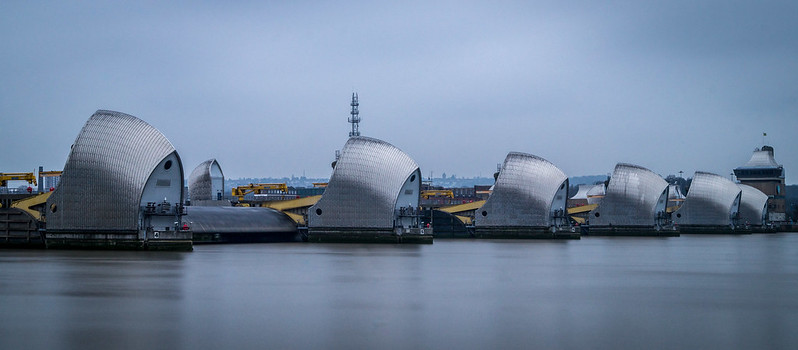Nature-based solutions are not always enough. This is how we can build with nature more effectively
“Nature-based solutions” is a relatively new phrase, but not a new concept: for centuries people have been, for example, planting trees to control erosion. Now the idea of working with natural systems is increasingly taking centre stage in climate change adaptation approaches.
C onsider the Sand Engine, a Dutch project now being replicated off the coast of England. It involves extracting sand offshore and dumping it such that sea currents will gradually distribute it along the coastline, making the coast more resilient to floods. A review found that in five years, 2.5 million cubic metres of sand had been distributed along 5km of coast.
Or how about growing oyster reefs, which have historically helped to dissipate waves in storms? Unlike concrete dikes, they can grow along with sea levels.
Nature-based solutions have attracted increasing interest in recent years, and their use has lately been promoted by a range of high-profile organisations working on climate change, from the GCA to IPBES, the IPCC and United Nations.
Multi-functionality is a major attraction of nature-based solutions. In many cases they help with climate change mitigation as well as adaptation. They often have social and economic benefits, too. The oyster reefs, for example, provide not only flood protection, but also oysters – a source of food and jobs.
Another nature-based solution, planting miniature forests in urban areas, brings multiple benefits that include cooling in heatwaves, reduced air pollution and improvements in local residents’ mental health.
Nature-based solutions are often known as “green” infrastructure, in contrast to traditional, “grey” engineering solutions, such as concrete dikes. Green infrastructure is often cheaper than grey infrastructure, and more able to adapt to changing circumstances – an advantage given the uncertainty surrounding the future trajectory of climate change.

The Thames Barrier in London is an example of ‘grey’ infrastructure to support climate adaptation. Photo by Phil Dolby on Flickr.
However, there are three significant barriers to the uptake of nature-based solutions, explored in a recent contribution to the Royal Society’s journal by academics from Oxford University.
The first barrier is difficulty in estimating their cost-effectiveness – in part because of the multi-functionality of nature-based solutions: it is difficult to put a monetary value on benefits such as improved mental health and food security, which means that the benefits of nature-based solutions may often be undervalued.
The second barrier is financial. Even when the benefits of nature-based solutions can be shown clearly to outweigh the costs, those benefits are typically long-term and diffused across many societal groups – so it can be a challenge to coordinate raising the necessary investment.
This problem needs to be solved, argue the authors, through “the creation of multilateral consortia of close partnerships between companies, communities, local governments, national governments, non-governmental organizations, local financial institutions, and national and international financial institutions”.
The final barrier is governance: nature-based solutions often cross jurisdictional boundaries and need the alignment of decision-makers in different sectors, many of whom are more familiar with traditional engineering approaches.
For that reason, Heidi Tuhkanen at the Stockholm Environment Institute puts “expand understanding about the value of nature-based solutions” at the top of her list of what needs to happen to mainstream nature-based solutions – followed closely by raising awareness about innovative finance mechanisms, such as “debt-for-nature swaps, risk-sharing instruments, and first-loss instruments”.
Nature-based solutions are not a panacea. Unless implemented thoughtfully, they risk creating dangerous monocultures or compromising the rights of local communities. They may sometimes be less able than traditional engineering solutions to handle the most extreme weather-related events.
There is a growing consensus that the most promising approach – and the best way to overcome the three barriers – is to combine nature-based solutions with traditional engineering solutions. “Grey” and “green” infrastructure need not be alternatives – they can be complementary.
The case is made in a recent report by the World Bank and the World Resources Institute, Integrating Green and Gray – Creating Next Generation Infrastructure: “While it is still early days, there is mounting evidence that natural systems can be combined with traditional gray infrastructure to provide lower-cost and more resilient services.”
In urban flood protection, for example, grey solutions – such as pumps and storm drains – can complement green solutions, such as bioswales, green roofs and stormwater retention basins.
In coastal flood protection, restoring mangrove forests can decrease storm surges and reduce the height at which embankments need to be built – and hence the cost of building them. The report highlights an example in Ca Mau, Vietnam, where the mangrove restoration also contributes to creating livelihoods in sustainable aquaculture.
A willingness to innovate, experiment and learn will be critical to finding the right combinations of green and grey, and realising the potential of nature-based solutions.
The ideas presented in this article aim to inspire adaptation action – they are the views of the author and do not necessarily reflect those of the Global Center on Adaptation.